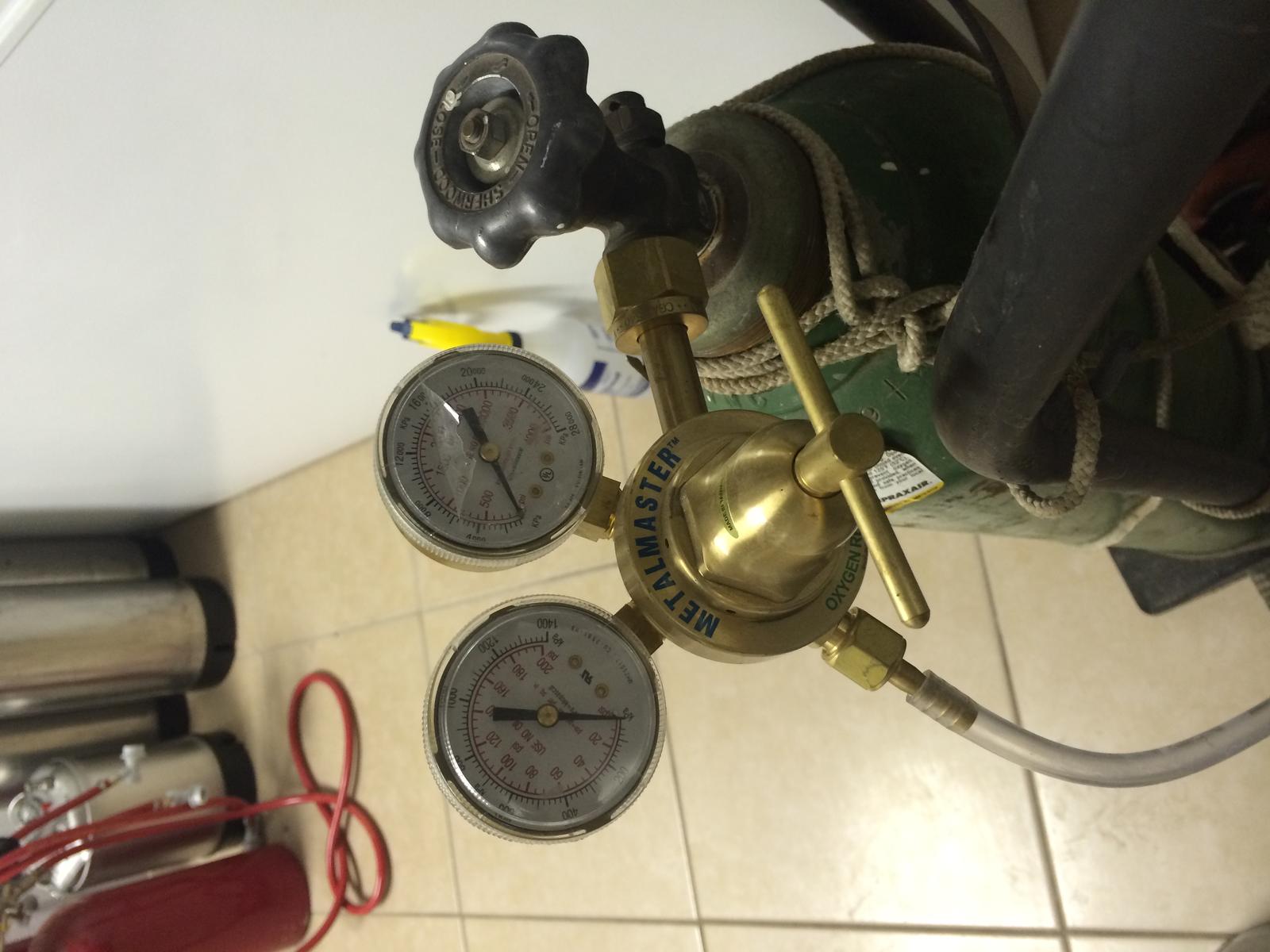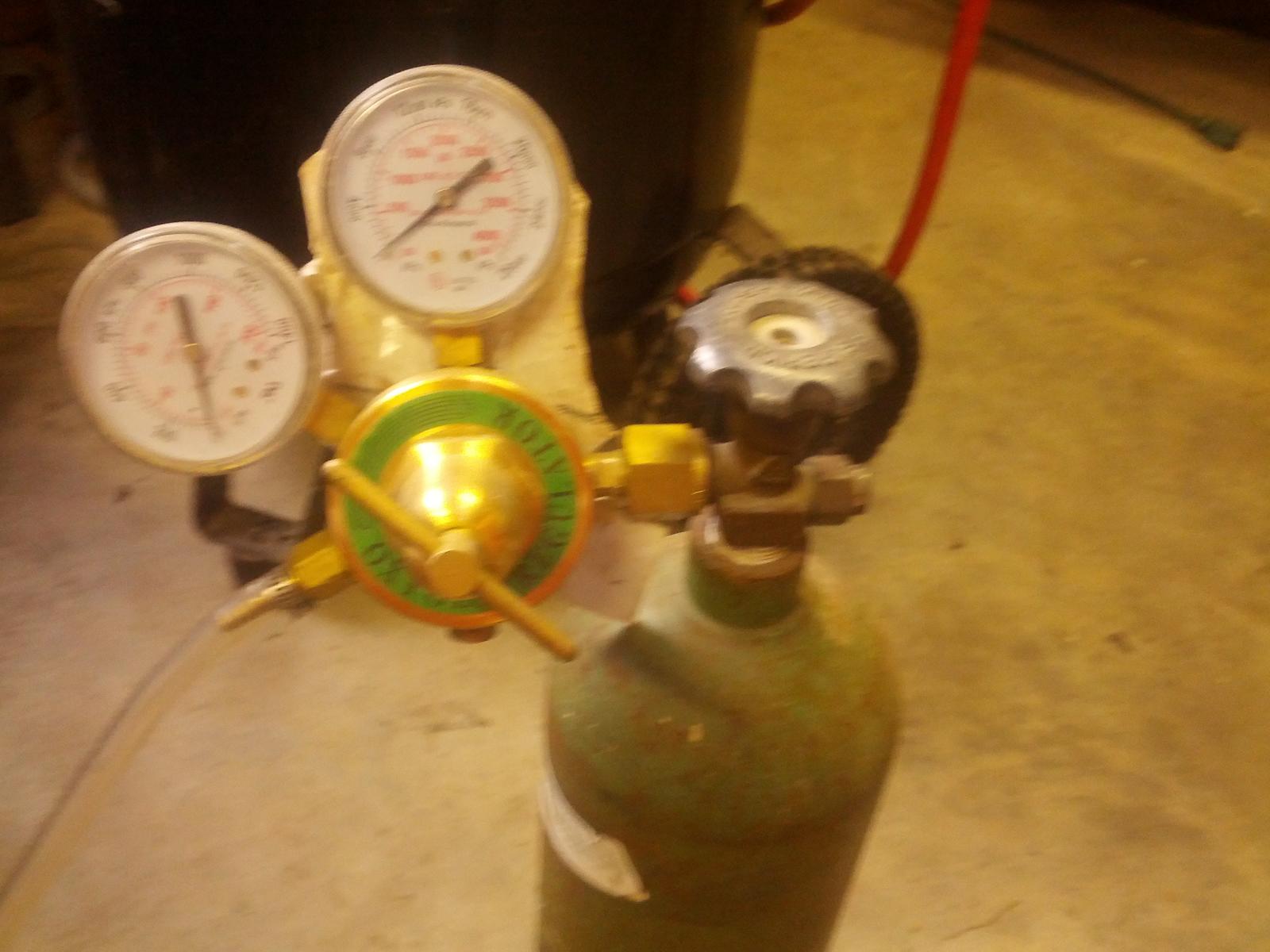You are using an out of date browser. It may not display this or other websites correctly.
You should upgrade or use an alternative browser.
You should upgrade or use an alternative browser.
Oxygenation - necessary?
- Thread starter byrnsey
- Start date

Help Support Homebrew Talk:
This site may earn a commission from merchant affiliate
links, including eBay, Amazon, and others.
Eagleburger
Member
- Joined
- Apr 9, 2014
- Messages
- 8
- Reaction score
- 0
I am only a noob. My brews, mostly lagers, brewed at 49f,attenuate in 4-5 days. So I assumed i dont need to oxygenate beyond a stirred starter. But it takes another 5days at 65f to rid the diacetyl. I have been told this extended time is due to low initial wort oxygen. Any one confirm that?
jscherff
Active Member
- Joined
- Nov 2, 2013
- Messages
- 39
- Reaction score
- 7
I stir the crap out of it in the kettle as it cools with the IC.
Based on what I've read, agitating the wort after the boil (before it chills to 80°F or less) leads to hot side aeration and accelerated staling. There is some debate on this, but I did this for my first few batches in order to cool it faster, and all those batches staled quickly. (And when I say "staled quickly," I mean went from tasting "good" to "not good" within a couple months.) Also, stirring while chilling exposes the cooling wort to airborne bacteria and wild yeast, which can lead to infection. I've created a few bottle bombs and sour gushers this way, despite meticulous sanitation.
boydster
Well-Known Member
- Joined
- Apr 11, 2013
- Messages
- 2,895
- Reaction score
- 834
Based on what I've read, agitating the wort after the boil (before it chills to 80°F or less) leads to hot side aeration and accelerated staling. There is some debate on this, but I did this for my first few batches in order to cool it faster, and all those batches staled quickly. (And when I say "staled quickly," I mean went from tasting "good" to "not good" within a couple months.) Also, stirring while chilling exposes the cooling wort to airborne bacteria and wild yeast, which can lead to infection. I've created a few bottle bombs and sour gushers this way, despite meticulous sanitation.
The cardboard flavor people describe is indeed an oxidation reaction on the hot side. I'm not sure how sensitive the wort is at that point, though, as I haven't read anything indicating how much oxygen exposure is required to make a noticeable impact or experimented to find out myself. I suspect it takes quite a bit, though, given the amount of "HSA is a myth" talk.
If you are having a lot of infections from airborne bacteria or wild yeast, you are most likely working in an environment with too much dust. They need something to ride, and that something needs to land in your beer/wort.
jscherff
Active Member
- Joined
- Nov 2, 2013
- Messages
- 39
- Reaction score
- 7
I suspect it takes quite a bit, though, given the amount of "HSA is a myth" talk.
I hope so. There certainly isn't a lot of agreement on this. My beers have been fine since I started emptying my mash tun gently with a hose and stopped stirring during the chill. BUT there are also a lot of other dumb things I don't do anymore, any one of which could have been screwing my brew, so my evidence is far from conclusive.
If you are having a lot of infections from airborne bacteria or wild yeast, you are most likely working in an environment with too much dust. They need something to ride, and that something needs to land in your beer/wort.
No infections since I started keeping my BK covered during chilling and stopped pouring my wort from BK to bucket and back to aerate it (another dumb noob thing I did when I first started brewing). I don't have much control over my environment other than to work inside the house after the boil and keep the windows/doors shut.
I don't stir it that aggressively until it's 80 or so. Not that a worry about HSA (the boogieman) but because oxygen is more soluble at lower temps.

$10.99 ($31.16 / Ounce)
Hornindal Kveik Yeast for Homebrewing - Mead, Cider, Wine, Beer - 10g Packet - Saccharomyces Cerevisiae - Sold by Shadowhive.com
Shadowhive
![Craft A Brew - Safale S-04 Dry Yeast - Fermentis - English Ale Dry Yeast - For English and American Ales and Hard Apple Ciders - Ingredients for Home Brewing - Beer Making Supplies - [1 Pack]](https://m.media-amazon.com/images/I/41fVGNh6JfL._SL500_.jpg)
$6.95 ($17.38 / Ounce)
$7.47 ($18.68 / Ounce)
Craft A Brew - Safale S-04 Dry Yeast - Fermentis - English Ale Dry Yeast - For English and American Ales and Hard Apple Ciders - Ingredients for Home Brewing - Beer Making Supplies - [1 Pack]
Hobby Homebrew

$176.97
1pc Commercial Keg Manifold 2" Tri Clamp,Ball Lock Tapping Head,Pressure Gauge/Adjustable PRV for Kegging,Fermentation Control
hanhanbaihuoxiaoshoudian

$7.79 ($7.79 / Count)
Craft A Brew - LalBrew Voss™ - Kveik Ale Yeast - For Craft Lagers - Ingredients for Home Brewing - Beer Making Supplies - (1 Pack)
Craft a Brew

$53.24
1pc Hose Barb/MFL 1.5" Tri Clamp to Ball Lock Post Liquid Gas Homebrew Kegging Fermentation Parts Brewer Hardware SUS304(Liquid Hose Barb)
Guangshui Weilu You Trading Co., Ltd

$53.24
1pc Hose Barb/MFL 1.5" Tri Clamp to Ball Lock Post Liquid Gas Homebrew Kegging Fermentation Parts Brewer Hardware SUS304(Liquid Hose Barb)
yunchengshiyanhuqucuichendianzishangwuyouxiangongsi

$58.16
HUIZHUGS Brewing Equipment Keg Ball Lock Faucet 30cm Reinforced Silicone Hose Secondary Fermentation Homebrew Kegging Brewing Equipment
xiangshuizhenzhanglingfengshop

$172.35
2 Inch Tri Clamp Keg Manifold With Ball Lock Posts, Pressure Gauge, PRV (0-30 PSI) – Homebrew, Fermentation, Kegging System
wuhanshijiayangzhiyimaoyiyouxiangongsi

$39.22 ($39.22 / Count)
Brewer's Best Home Brew Beer Ingredient Kit - 5 Gallon (Mexican Cerveza)
Amazon.com

$27.29 ($13.64 / Count)
$41.99 ($21.00 / Count)
2 Pack 1 Gallon Large Fermentation Jars with 3 Airlocks and 2 SCREW Lids(100% Airtight Heavy Duty Lid w Silicone) - Wide Mouth Glass Jars w Scale Mark - Pickle Jars for Sauerkraut, Sourdough Starter
Qianfenie Direct

$22.00 ($623.23 / Ounce)
AMZLMPKNTW Ball Lock Sample Faucet 30cm Reinforced Silicone Hose Secondary Fermentation Homebrew Kegging joyful
无为中南商贸有限公司

$33.95
Five Star - 6022b_ - Star San - 32 Ounce - High Foaming Sanitizer
Bridgeview Beer and Wine Supply
I don't see a flow meter...
Standard O2 welding oxygen gauge and valve for welding. Its that brass thing at top (gauge and valve not visible in first photo so here it is! A manly solution) Easy to control.


HSA? Hijack: Well sorta, we are talking about Oxygen. Here is a link to an OLD brew strong podcast with a UC Davis professor. It does not talk about HSA until 4:25 into the podcast and does not get to the interview until about 12:50 or so. You will need some time and maybe a cool mug to get though it. It does put HSA in its place however!
http://s125483039.onlinehome.us/archive/bs_hsa1-26-09.mp3

http://s125483039.onlinehome.us/archive/bs_hsa1-26-09.mp3
jscherff
Active Member
- Joined
- Nov 2, 2013
- Messages
- 39
- Reaction score
- 7
Here is a link to an OLD brew strong podcast with a UC Davis professor.
http://s125483039.onlinehome.us/archive/bs_hsa1-26-09.mp3
Yep, that's good old Charlie Bamforth, and he said the same thing in BeerSmith podcast #74. You said it very well: he "put HSA in it's place" relative to all the other things the homebrewer should be concerned about. My only point was that stirring an open kettle of wort while it chills is an opportunity for bacteria/yeast infection or oxidation (or both) to get into your beer, so why take a chance? Probably the bacteria and wild yeast risk is higher, as most people boil and chill outside or in their garage where airborne particles carrying these organisms are more prevalent. (Perhaps I should have just said it that way to begin with. D'oh.)
Standard O2 welding oxygen gauge and valve for welding. Its that brass thing at top (gauge and valve not visible in first photo so here it is! A manly solution) Easy to control.
Hey, that looks similar to my setup.

I haven't used it in 2 years now though.

I am somewhat concerned about sanitation so we now remove the hose and stone and boil it. I got 3/8 silicone hose and while it does not hold very well on the little pancake filter, it is easy to remove and trow into the cleaning pot. I boil all of my ball valves, triclamps, and gaskets after every brew.
Yep, that's good old Charlie Bamforth, and he said the same thing in BeerSmith podcast #74. You said it very well: he "put HSA in it's place" relative to all the other things the homebrewer should be concerned about. My only point was that stirring an open kettle of wort while it chills is an opportunity for bacteria/yeast infection or oxidation (or both) to get into your beer, so why take a chance? Probably the bacteria and wild yeast risk is higher, as most people boil and chill outside or in their garage where airborne particles carrying these organisms are more prevalent. (Perhaps I should have just said it that way to begin with. D'oh.)
I thought about this and we now use a Duda Diesel Chiller and go directly from whirlpool to putting in a Fermenter. I can pump 180 degree wort at full throttle in to a Fermenter at 64 degrees in the winter (Dallas Area). In the summer I use chilled water. Less chance for Bacteria
I thought about this and we now use a Duda Diesel Chiller and go directly from whirlpool to putting in a Fermenter. I can pump 180 degree wort at full throttle in to a Fermenter at 64 degrees in the winter (Dallas Area). In the summer I use chilled water. Less chance for Bacteria
How much chilled water are you preparing during the summer time?
Similar threads
- Replies
- 138
- Views
- 12K
- Replies
- 83
- Views
- 6K
- Replies
- 10
- Views
- 2K
- Replies
- 14
- Views
- 775
- Replies
- 2
- Views
- 1K
Latest posts
-
-
-
-
-
-
-
I just poured 42 bottles of HB Dunkelweizen down the drain
- Latest: IslandLizard



































